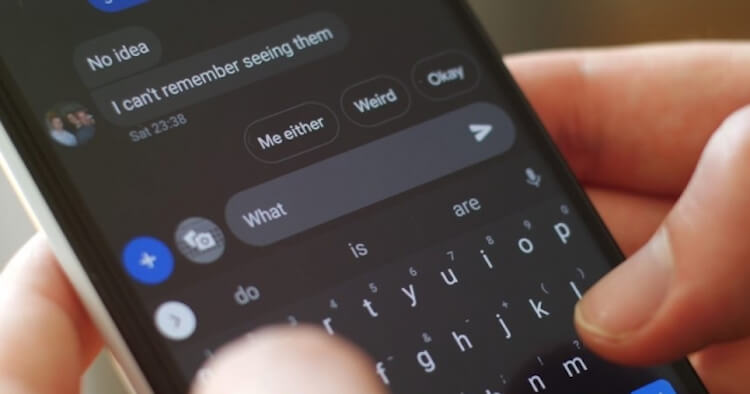When there were no messengers yet, there were simple SMS messages. How it made you think over every word that you wrote to someone! Each message cost normal money, and not even the longest correspondence could result in a lump sum. Then the word “Hello!” we did not write a separate message. When it was necessary to meet 140 characters in Latin or 70 characters in Cyrillic, sometimes there was no time for greetings at all. Things have become much easier now, but SMS is still alive. Apparently, they won't have long left, as new technologies based on 5G will soon replace them from our phones. What will replace them and how do you live after that?

Once upon a time, SMS was an advanced way of communication, but time spares no one.
Communication by SMS
The smartphone industry is constantly evolving and different segments are updated from time to time. A few months ago it was reported that the built-in SMS function would be replaced with a more complex messaging function 5G. According to the latest data, the messaging option 5G is now available in the text messages section of some phones Xiaomi (so far). If users enable this option, it will inform users that text messages will be received via WLAN or mobile networks by default.
According to the information available to date, the messaging service 5G is an update to the basic short message service (SMS). For individual users “Messages 5G” will remove the limitation of the length of each message, familiar with traditional SMS. In addition, the new message type will also support multiple media formats, including text, images, audio, video, emoticons and contacts. In addition, users will be able to monitor the delivery status of messages and work with the history of messages.
The result is something like a messenger. At least this is the kind of functionality that the good old way of writing short messages will have. It is difficult to say that this will somehow affect the audience of instant messengers, but most likely it will not. First, many have already chosen the messenger they like. Secondly, even if someone wants to switch to the new SMS 2.0 (if you can call them that), he will be faced with the fact that the people with whom he communicated before remained in the messengers, and there is simply no one to send SMS messages. So he will come back.
Who will use the new messages
But some users will “go in” anyway. Especially those who previously used only SMS, occasionally sending them to someone. With the new tool, he can start sending messages more often. In addition, it can be assumed that operators will finally transfer SMS payments to a batch basis and will not count them individually. I mean that they will become unlimited within the tariff or an additional option to it.

Remember how you sent SMS to everyone and then received a large phone bill?
Regardless of the length or size of the multimedia message, 5G – the networks will process it. Users will not only be able to communicate with each other as before, but also interact with service providers through chatbots right in the SMS interface. Users can use this function to sort services such as buying tickets, checking logistics, paying fees, and the like. Everything will be paid for in the messaging app and stored there. This can also become an additional factor in the success of the new service.
Thus, “Messages 5G” will become a good tool for human-computer interaction. Perhaps this is their main purpose.
The information we have now indicates that messages 5G will be automatically active by default if the phone is compatible with this function. However, if it is not there, you can activate it through the settings in the SMS interface. Please note that for this new messaging feature to work, your smartphone must be on networks 5G or at least 4G.

Most likely the message interface will be similar to what it is now.
How to activate “Messages 5G”
The activation settings for “Messages 5G”, like the application interface, will differ from model to model. As now, each manufacturer will make the interface he needs himself and offer more convenient controls from his point of view.
Coming back to the fact that some smartphones Xiaomi can already work with this function, it is still impossible to say which models are in question. Perhaps you already have it if it can actually work on 4G networks. If you find it, let us know in our Telegram chat, on which model you found it, how it works and how to activate (if necessary) this function.
For the majority, it remains only to wait until the novelty appears in their devices. But it's worth noting that back in April, representatives from 11 companies, including Huawei, Samsung and Xiaomi, took part in an online event celebrating the feature. Even then it was said that new messages should start earning in June 2020. In addition to them, Vivo, OPPO, ZTE, Lenovo and Meizu are working on the project. All of these companies have commended the use of the new new messaging feature.
How old messages will interact with new ones is not yet completely clear, but, most likely, backward compatibility should be present. After all, millions of people in the world still prefer to use push-button telephones and they cannot be left without messages either.
